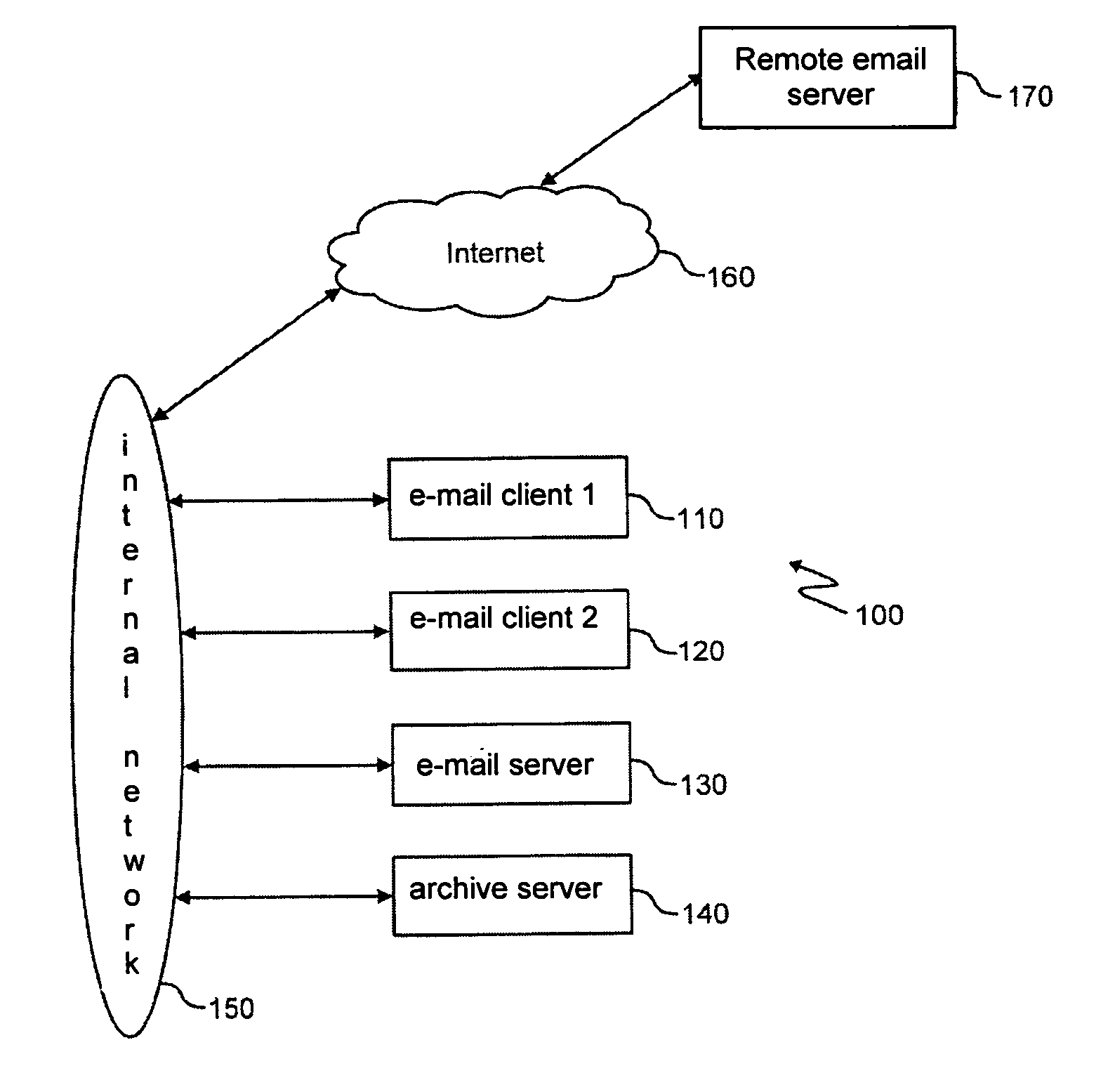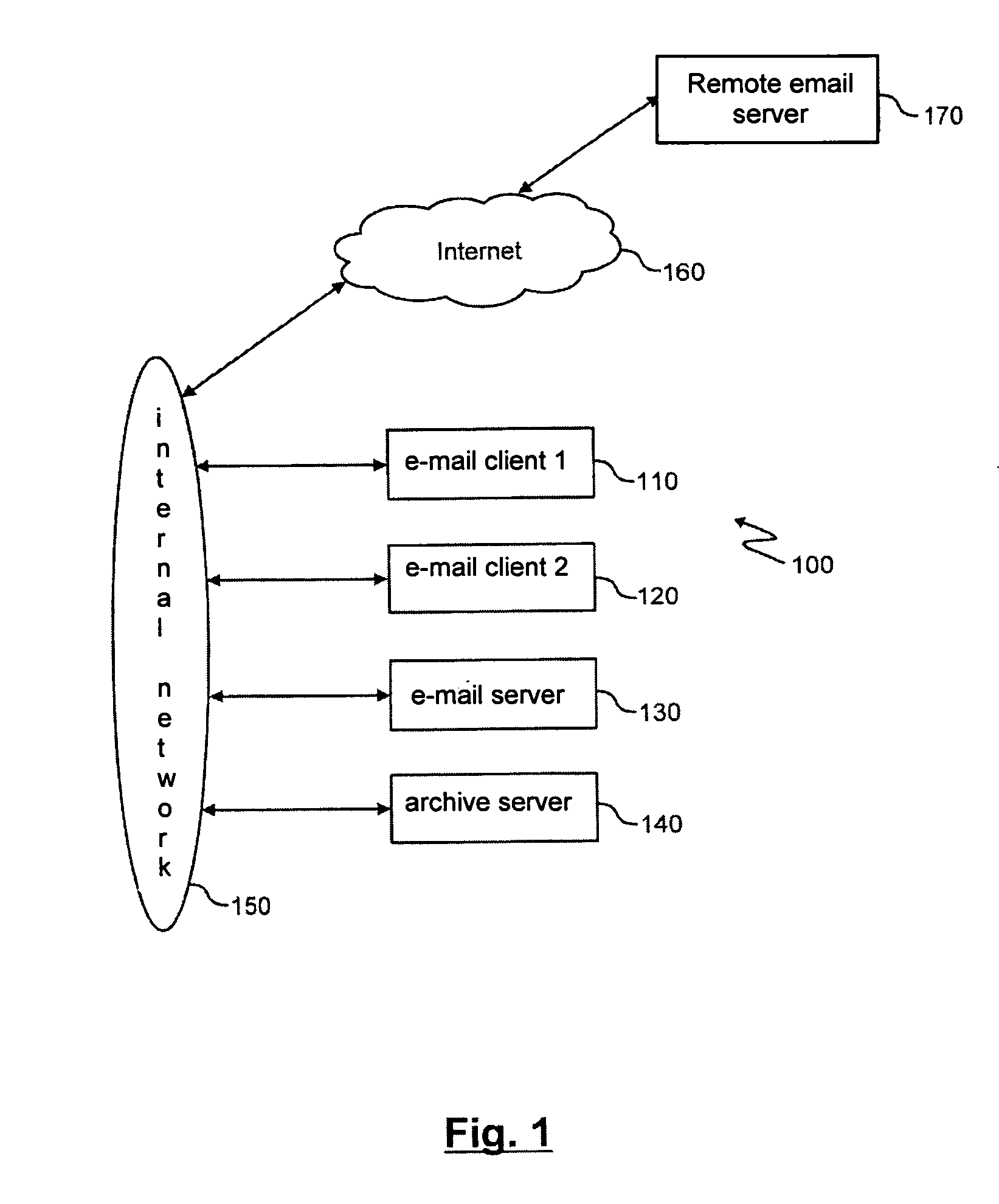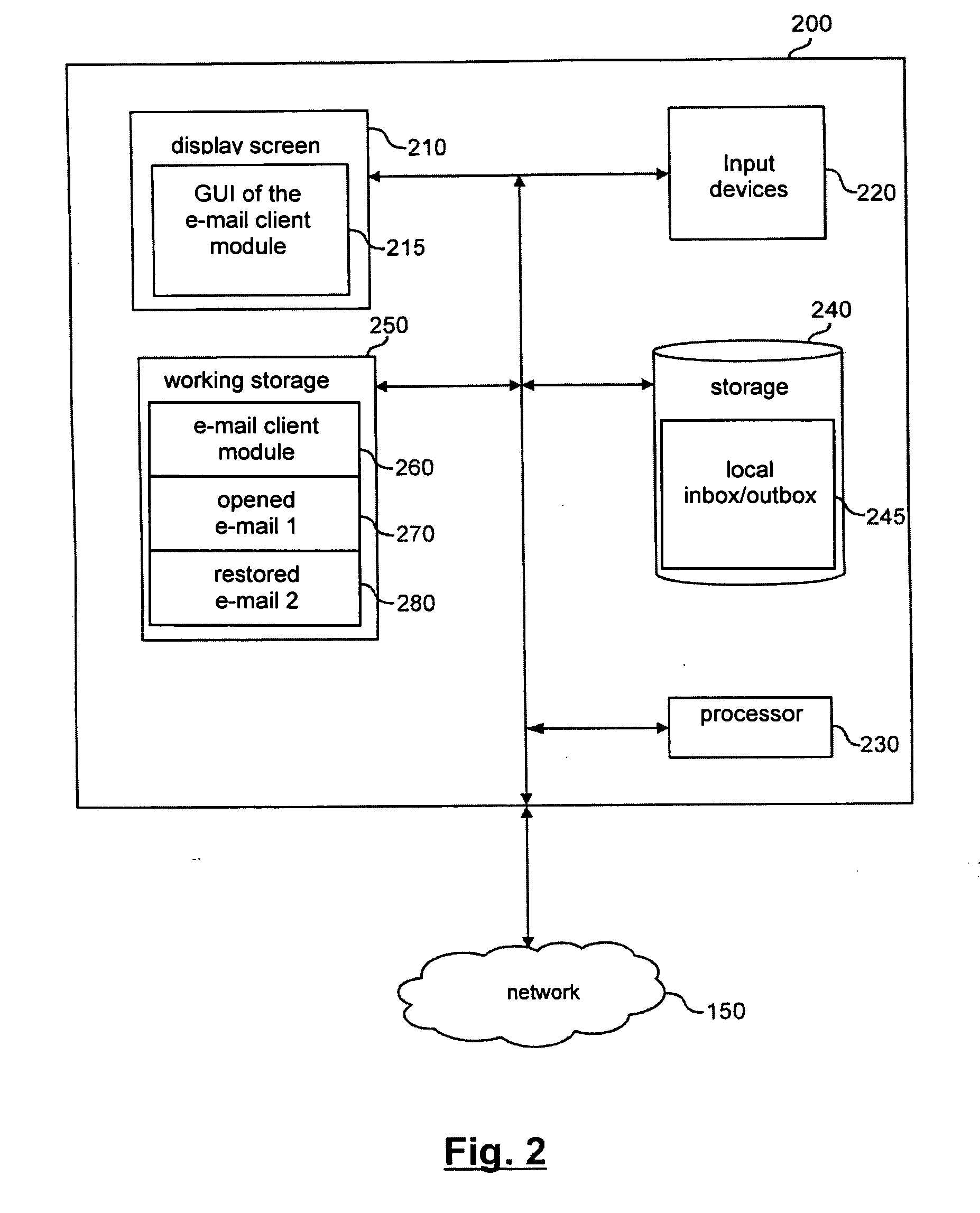Method and apparatus for managing electronic messages
a technology for managing electronic messages and e-mail servers, applied in the direction of transmission, instruments, electric digital data processing, etc., can solve the problems of increasing the storage requirement of e-mail servers, affecting the quality of electronic messages, and reducing the redundancy of e-mail servers, so as to achieve the effect of substantially reducing redundancy
- Summary
- Abstract
- Description
- Claims
- Application Information
AI Technical Summary
Benefits of technology
Problems solved by technology
Method used
Image
Examples
Embodiment Construction
[0036] The described methods and systems for the storage-efficient management of electronic messages have obvious advantages. Files which previously could not be accessed separately as file attachments in messages can now be separated out from the messages and managed and stored separately, it being possible to reassemble the original message at any time.
[0037] The storage requirement for storing electronic messages is substantially reduced, in that individual file attachments are now stored only once, since the identification value makes it easy to ascertain whether the file attachment is already stored in the system, so that further instances of the file need not be stored again. Instead, reference is made to the already existing instance.
[0038] According to an exemplary embodiment of the present invention, the identification value is generated as a hash value, using a so-called hash algorithm. For example, the Java programming language provides for this purpose the “hashCode ( ...
PUM
 Login to View More
Login to View More Abstract
Description
Claims
Application Information
 Login to View More
Login to View More - R&D
- Intellectual Property
- Life Sciences
- Materials
- Tech Scout
- Unparalleled Data Quality
- Higher Quality Content
- 60% Fewer Hallucinations
Browse by: Latest US Patents, China's latest patents, Technical Efficacy Thesaurus, Application Domain, Technology Topic, Popular Technical Reports.
© 2025 PatSnap. All rights reserved.Legal|Privacy policy|Modern Slavery Act Transparency Statement|Sitemap|About US| Contact US: help@patsnap.com



